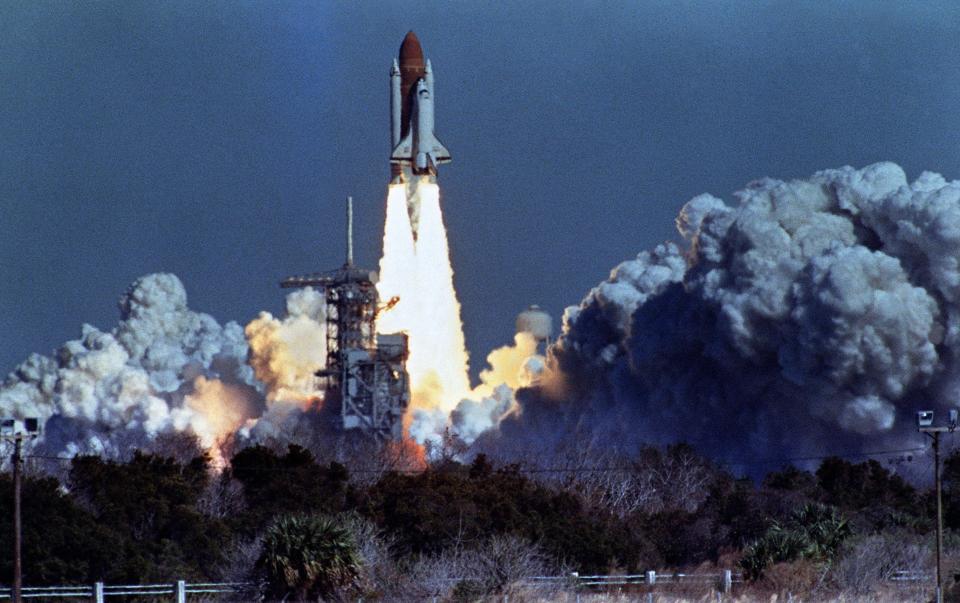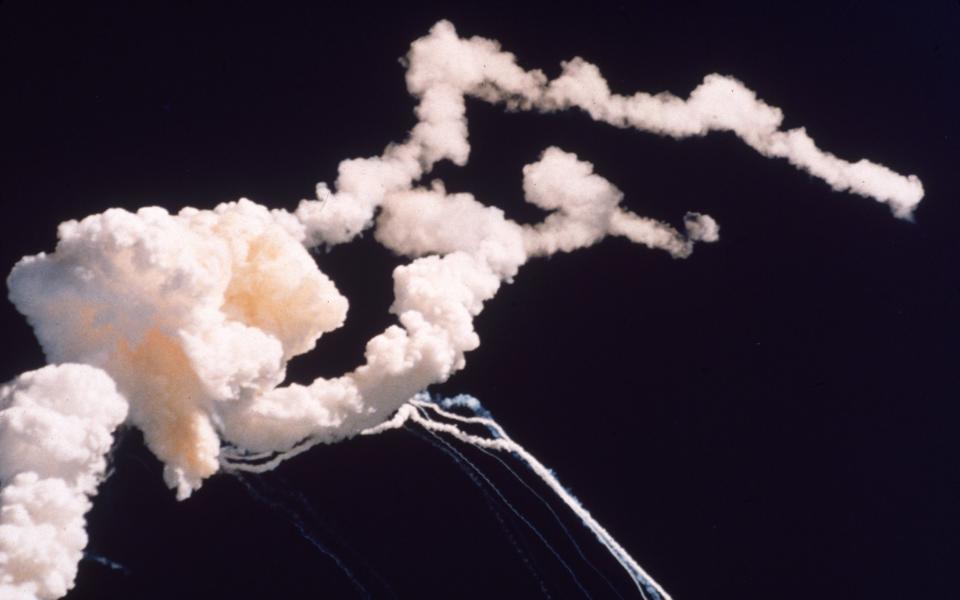In the final days of World War II, one of Hitler’s most brilliant rocket scientists came up with an ambitious plan to attack America. Eugen Sänger’s design, called the Silbervogel or “Silver Bird”, was part rocket, part spacecraft. Shaped like a flattened paper airplane, it would fly from Germany into low Earth orbit; from there it would use its flattened shape to ‘jump’ past the denser gases of the inner atmosphere, then bomb New York, before continuing on to Japan to refuel, spin around and attack Los Angeles on the way back to Berlin – and with it the entire American continent.
The Silbervogel never got past the graph paper stage. Yet Sänger’s outlandish ambition for a reusable spaceplane and his design—a clunky, snub-nosed spacecraft designed to slow itself through friction on its return to Earth—would ultimately form the basis of the U.S. Space Shuttle program. In the 1960s and 1970s, the elegant, spindle-like Apollo rockets had carried twelve men to the moon’s surface; In contrast, the Shuttle was expected to depart almost weekly, towing commercial and military payloads into space and carrying journalists and dignitaries. It was, writes Adam Higginbotham, “the most complicated machine in history” – and flight by flight it would become one of the deadliest.
Higginbotham’s fantastic Challenger tells the full, tragic story of the Space Shuttle program. Using the same combination of archival research and interviews that characterized his first book, Midnight in Chernobyl (2019), it is authoritative and immediate – meticulous history that has the searing urgency of the best reporting.
At the heart of Higginbotham’s story is the disaster of January 28, 1986. One minute and fifteen seconds after launch from Cape Canaveral, Florida, the Challenger, one of the program’s five operational vessels, disappeared in a gigantic fireball. There were seven men and women on board. Witnesses watching in person and in front of screens around the world saw a small streak of smoke licking one of the rocket boosters; an instant later the entire vessel was engulfed in flames. The Challenger itself seemed to disappear, its crew swallowed up by the vast blue sky dome. Millions watched live on television. Just over six hours later, US President Ronald Reagan addressed his country from the Oval Office. It is estimated that by the end of that day, 95 percent of Americans had seen the images. The Challenger disaster became a public tragedy rivaled only by the assassination of JFK—and, less than twenty years later, September 11.
Higginbotham forensically unravels the cavalcade of cost-cutting and back-covering that preceded Challenger’s destruction. Yet I found his earlier chapters, in which he contextualized the Space Shuttle program, equally compelling. He reminds us that the Space Race was never universally popular: many in the US government and the broader public found it costly, wasteful and, above all, pointless. Moreover, its untouchable iconography – William Anders’ 1968 “Earthrise” photo, Neil Armstrong’s first steps on the moon in 1969 – failed to convince everyone that it was representative of an increasingly diverse America. Such attitudes were captured in the poem “Whitey on the Moon” by African-American writer Gil Scott-Heron: “Was all that money I made last year (for Whitey on the moon?) / How come no money here is? (Hmm! Whitey is on the moon.)” Some expressed their feelings in a simpler way. A month after Armstrong and his crew returned from space, they were celebrated at a Hollywood gala attended by then-President Richard Nixon. Protesters hung a banner from a building across the street. It simply read: “F— MARS.”

As a result of these criticisms, NASA decided that the Space Shuttle program would have more diverse crews. Aboard Challenger that morning in 1986 was Ron McNair, a polymathic astronaut who was the second black man in space and the first musician to record in orbit (with a saxophone solo for an album by Jean-Michel Jarre). The Shuttle also had two female crew members: Judy Resnik, a no-nonsense engineer who had fought for years for the right to fly, and Christa McAuliffe, a social studies teacher. McAuliffe was chosen from more than 11,000 applicants as part of NASA’s Teacher in Space program, an initiative to open space travel to citizens. During her stay in orbit, she would teach American children via video link. Among those watching the Challenger launch from Cape Canaveral were 350 students from McAuliffe’s school in New Hampshire, who flew to Florida for the occasion.
Higginbotham explains that little mystery remains behind Challenger’s destruction. From the beginning, the loaded guns are the O-rings, rubber seals in the rocket boosters designed to keep the highly explosive gases inside them from mixing. Built by contractor Morton Thiokol, experts repeatedly warned that the O-rings in boosters recovered from previous flights were showing worrying signs of erosion. The problem became worse at lower temperatures, and in extreme cold the rings sometimes failed to seal completely. Temperatures on the platform on the morning of January 28 were the lowest ever recorded before a launch. Roger Boisjoy, a Thiokol engineer, argued – until the evening before Challenger’s launch – that the plane should be grounded. Fearful of losing their contracts, and aware of NASA’s breakneck schedule, senior managers ignored him.


The Challenger disaster did not halt the Space Shuttle program. It resumed 32 months later, when Discovery was successfully launched in September 1988, and although Columbia and her seven crew were also lost in 2003, the shuttle disintegrated on its return to Earth’s atmosphere after its thermal protection system failed, the flights continued until 2011. But in January 1986, the dream of routine, government-sponsored spaceflight began to die, crushed by hubris, incompetence and too much bureaucratic nonsense.
But ultimately the strength of Higginbotham’s book lies in its focus not only on the severe blow to American self-confidence, but also on the human toll it took. The crew’s families were relentlessly pursued as they were forced to relive the most harrowing moments of their lives day after day. When Alison Smith went to the mall to buy an outfit for a memorial service, a hush of silence ensued as strangers remained silent in her presence. And weeks after the disaster, June Scobee, wife of Dick, the late Shuttle commander, collapsed while shopping: she put her husband’s favorite peanut butter in the cart, only to realize no one was home to eat it. to eat.
And in a grim twist, crash investigators determined in the summer of 1986 that—contrary to initial belief—the crew module did not immediately explode. It is highly likely that the crew was alive during their two-and-a-half-minute freefall into the Atlantic Ocean, 20 miles offshore. An examination of the craft’s instrument panel revealed that when he fell, pilot Mike Smith had frantically tried every procedure he could think of. “He knew he was going to die,” Higginbotham writes. “But he never stopped trying to live.”
Challenger is published by Viking for £25. To order your copy for £19.99, call 0808 196 6794 or visit Telegraph books